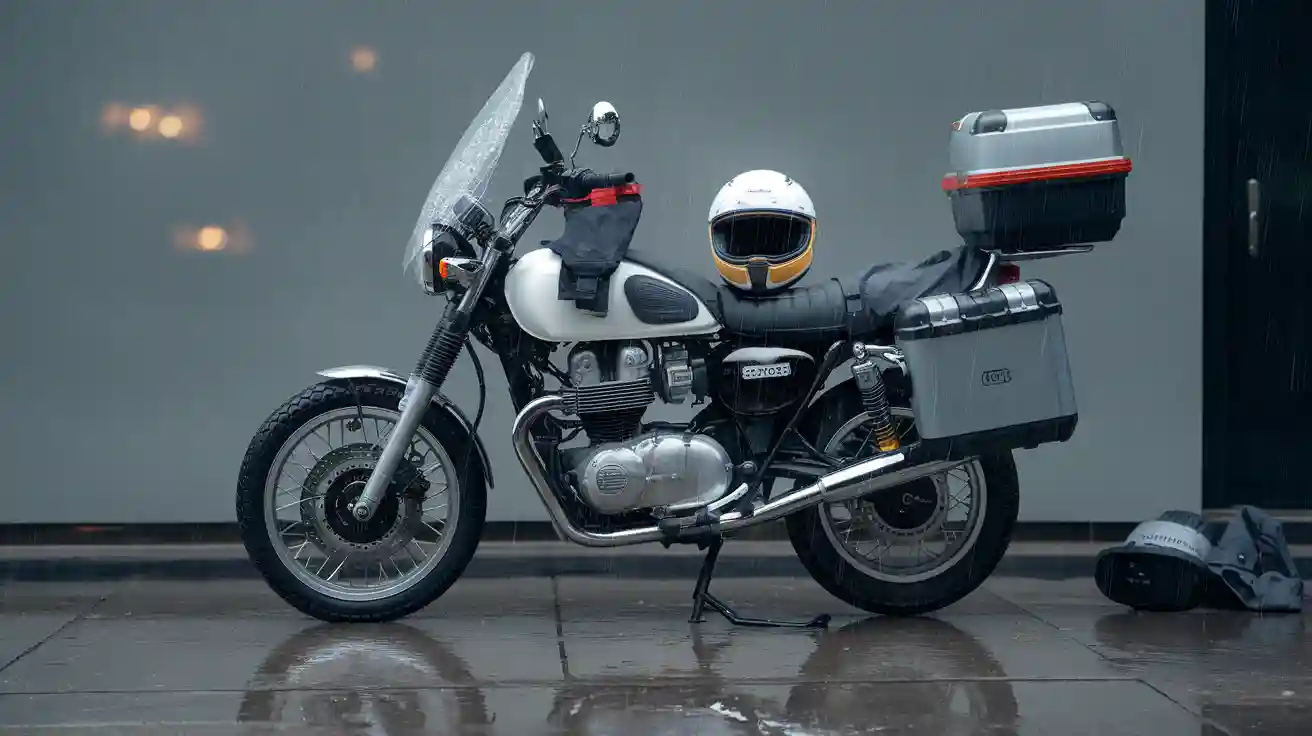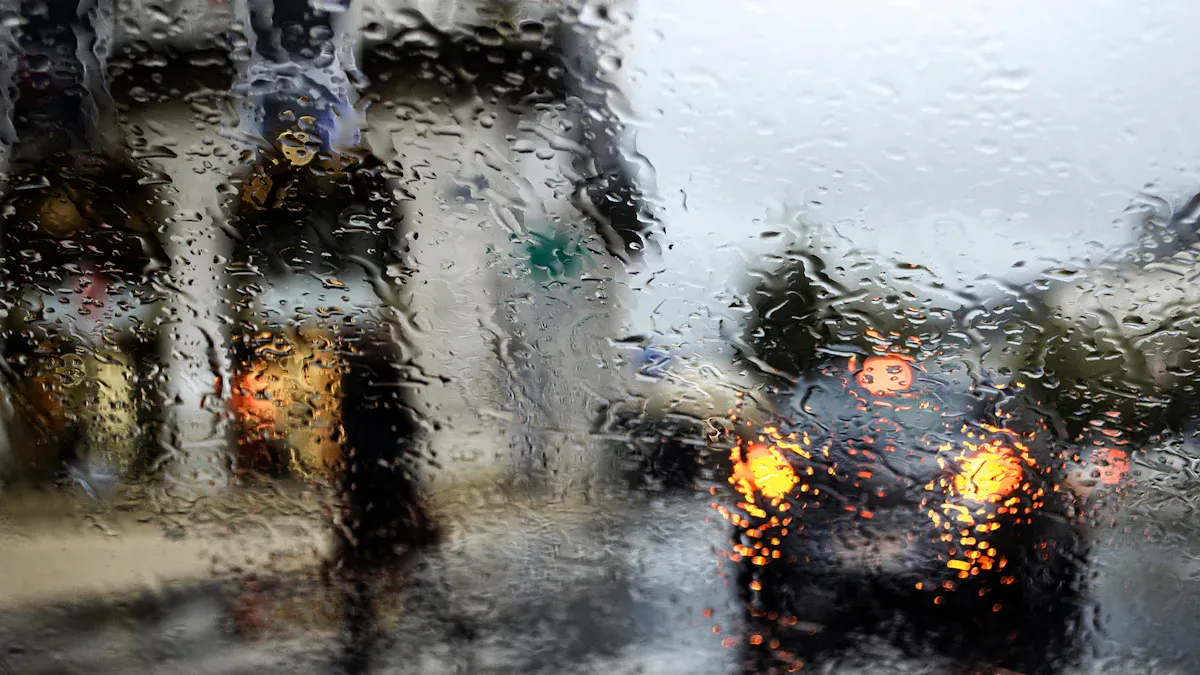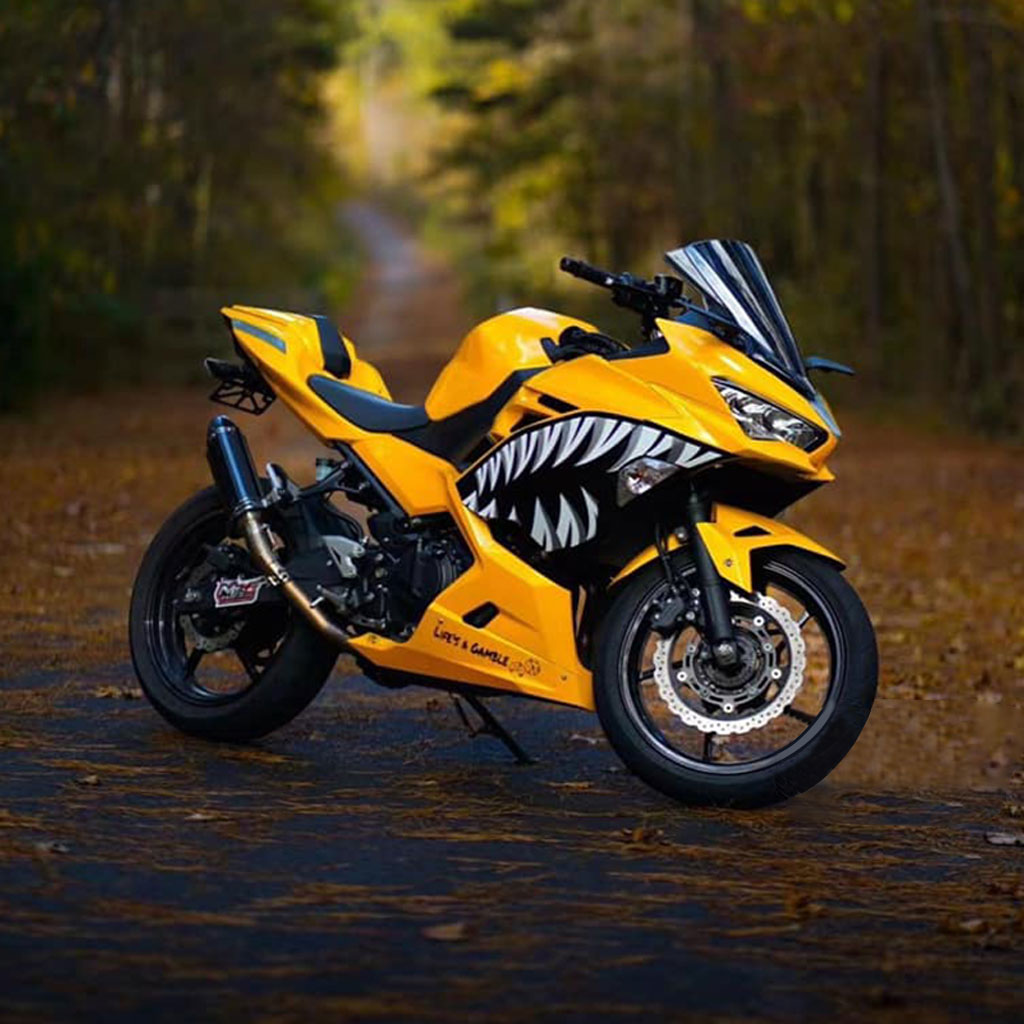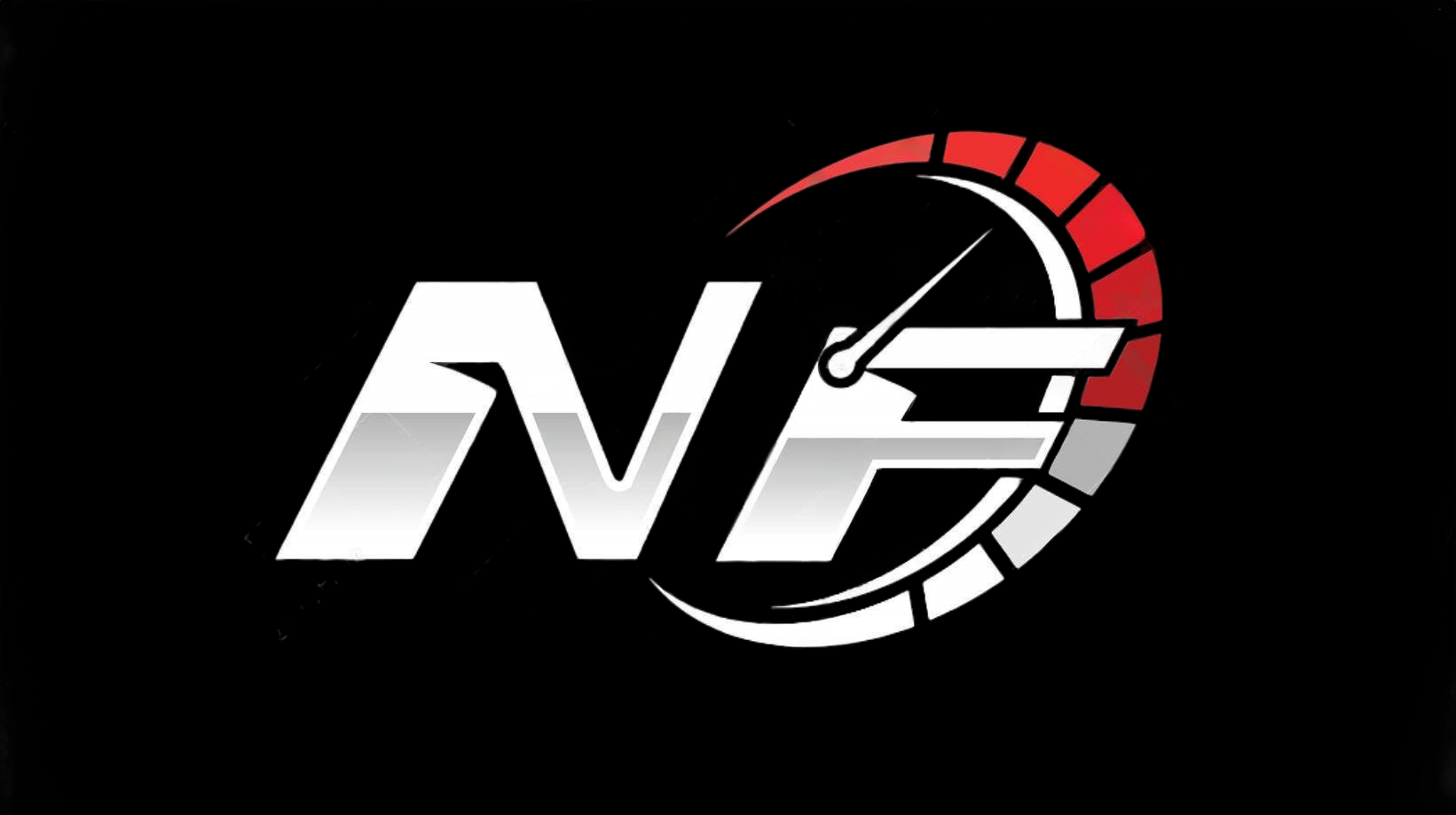How to Safeguard Your Motorcycle in the Rain with Smart Equipment Choices

Riding your motorcycle in the rain brings unique challenges. Wet roads cut your grip and make stopping harder, so you need the best motorcycle for rain to stay safe. Even though only about 1.7% to 10% of motorcycle accidents happen in wet weather, hazards like poor visibility and slick surfaces make every ride riskier. You can boost your protection by checking your tires for grip and keeping up with regular maintenance. Simple steps like drying your bike after wet weather riding or storing it in a dry place give your motorcycle in the rain the protection it needs. The best motorcycle for rain combines strong grip, smart gear, and the right protection.
Tyre and Brake Readiness for Riding in the Rain
Inspecting and Upgrading Tyres for Wet Grip
When you ride in the rain, your tires become your best friends. You need to check your tires and brakes before every trip. Tires with special tread patterns help you stay safe. Experts say grooves and sipes channel water away from the contact patch, so you get better grip and less chance of hydroplaning. The shape of motorcycle tires also helps push water out, which means you keep control even when the road gets slick.
If you want good handling characteristics, look for tires with silica-infused rubber. This compound boosts grip and makes riding in the rain feel more secure. Some tires, like the Metzeler Cruisetec and Michelin Commander III, use dual-compound designs. These tires have a tough center for durability and softer edges for extra grip during wet turns. You get better handling, shorter braking distances, and more confidence. Remember, stickier compounds give you more grip but wear out faster. Harder compounds last longer but don’t handle as well in wet weather.
Tip: Always check your tire pressure before riding in the rain. Low pressure can ruin handling and reduce grip.
Checking and Maintaining Brakes for Rain Performance
Brakes work harder when you ride in the rain. Water can make them less responsive, so you need to inspect them before every ride. Look at your brake pads and make sure they are not worn down. Sintered brake pads perform best in wet weather. They last longer, resist heat, and give you strong grip even on muddy roads. Ceramic pads are quieter but wear out faster in harsh conditions. Organic pads don’t handle wet roads well and can glaze over.
| Brake Pad Type | Wet Weather Performance | Pros in Wet Conditions | Cons in Wet Conditions |
|---|---|---|---|
| Sintered Metallic | Great in wet and muddy conditions | Durable, reliable braking | Noisy, slow to warm up |
| Ceramic | Good in normal wet weather | Quiet, heat resistant | Wears faster in harsh wet weather |
| Organic | Poor in wet conditions | N/A | Glazing, not for wet roads |
| Semi-Sintered | Good in wet and dry conditions | Quick warm-up, optimal power | Prone to glazing |
ABS systems help you keep control and improve handling when roads get slippery. ABS prevents your wheels from locking up, so you stop safely. You should flush and replace brake fluid as your manufacturer recommends. Brake fluid absorbs moisture, which can hurt performance. ABS also works best when your brakes are in top shape. Inspect brake lines and discs for damage. ABS gives you more confidence and better handling in the rain.
Note: ABS is a must-have for riding in the rain. It helps you avoid skidding and keeps your handling smooth.
Chain, Sprocket, and Electrical Protection for Your Motorcycle in the Rain
Cleaning and Lubricating the Chain and Sprockets
Rainy rides can wash away the oil on your chain and sprockets, leaving them dry and exposed. If you want to keep your bike running smoothly, you need to clean and lubricate these parts more often when the weather turns wet. Usually, you might lube your chain every 500-600 miles. In the rain, you should do it every 300-400 miles. Some riders even clean and lube their chains every 100 miles in really wet places. This extra care gives your chain and sprockets the protection they need from rust and wear.
Choosing the right lubricant makes a big difference. Wet, oil-based lubes with water-repellent features work best for rainy conditions. Here’s a quick look at some top choices:
| Lubricant Name | Type | Best For Rainy Rides? |
|---|---|---|
| Muc-Off C3 Ceramic Wet Lube | Oil-based | Excellent water protection |
| Maxima Chain Wax Parafilm Lube | Wax-based | Long-lasting, quiet |
| Bel-Ray Super Clean Chain Lube | Hybrid | Repels dirt, strong coating |
| Motorex Road Chain Lube | Oil-based | Great adhesion, water repels |
| PJ1 Black Label Chain Lube | Oil-based | Rust and corrosion protection |
Wet weather can stretch your chain faster. If you notice your chain getting loose, replace it to avoid damaging your sprockets. Sealed chains (like O-ring or X-ring) need frequent cleaning but less lube. Standard chains need more lube and less cleaning.
Tip: Always wipe off extra lube to keep dirt from sticking and causing more wear.
Waterproofing Electrical Components and Battery Terminals
Water and electricity don’t mix. If rain gets into your bike’s electrical system, you could face annoying problems or even a breakdown. You can boost your bike’s protection by following a few simple steps:
- Apply dielectric grease to all electrical connectors. This keeps out water and stops corrosion.
- Use silicone sealant to close up gaps around your battery, display, and switches.
- Wrap wires and connectors with heat-shrink tubing or silicone tape for extra protection.
- Install mudguards or fenders to keep water and mud away from sensitive parts.
- Cover your battery with a waterproof case or seal. Clean and dry the terminals after wet rides, then add a dab of dielectric grease to stop corrosion.
Moisture can cause white or green buildup on battery terminals, which hurts power and charging. Regular checks and cleaning help your battery last longer and keep your bike running strong.
Note: Avoid using high-pressure water when cleaning your bike. Gentle washing protects seals and keeps water out of the electronics.
Engine, Air Filter, and Body Care for the Best Motorcycle for Rain
Protecting Engine Oil and Air Filter from Moisture
Rainy rides can sneak water into places you don’t want it—like your engine oil and air filter. If water mixes with your engine oil, it can break down the oil and hurt your engine. You want to use fully synthetic oils made for motorcycles. These oils, like Mobil 1 Racing 4T or Motul 7100 4T, hold up better against water and keep your engine safe. Look for oils with JASO MA or MA2 ratings. They protect your wet clutch and help your bike run smooth, even in the rain.
Your air filter also needs extra care. If you ride with an exposed or pod-style filter, rain can get inside and mess up your engine’s air and fuel mix. This can make your bike run rough or even stall. Sealed air filters, usually tucked under the seat or inside a closed airbox, give you better protection. If you want the best motorcycle for rain, always check that your air filter is dry and sealed before you ride.
Tip: After a wet ride, check your oil for a milky color. That means water got in, and you should change it right away.
Maintaining Paint and Bodywork Against Water Damage
Keeping your motorcycle looking sharp in the rain takes a little work. Water, dirt, and road salt can wear down your paint and bodywork. Urethane and acrylic urethane paints, like House of Kolor’s Kosmic line, stand up well to wet weather. A clear coat on top adds even more protection and keeps your bike shiny.
Here are some easy ways to protect your bike’s bodywork:
- Wash your bike with mild soap and a soft cloth. Skip the high-pressure washer, which can push water into seals.
- Cover switches, the exhaust, and air intake with cling wrap before washing.
- Dry your bike with forced air instead of towels to stop water spots and rust.
- Use polish and wax on painted parts to seal out moisture.
- Park under cover or use a motorcycle cover for extra protection.
If you want the best motorcycle for rain, regular cleaning and waxing keep your bike looking new and help prevent water damage. A little care goes a long way in keeping your ride ready for any weather.
Smart Fairing and Equipment Choices for Motorcycle in the Rain

Choosing Essential Rain Fairings and Windshields
When you ride your motorcycle in the rain, the right fairings and windshields make a huge difference. You want to keep water off your body and your controls. A good windshield does more than just block wind—it gives you real protection from the elements and helps with handling.
Here’s what you should look for when picking fairings and windshields for rainy rides:
- Proper windshield height and size matter most. A tall enough shield will push rain and wind over your helmet, not into your face.
- Adjustable wind deflectors on top of your windshield let you direct airflow. You can change the angle or height to get the best protection and reduce rain impact.
- A small gap under the windshield, made by adding washers, helps smooth out airflow. This trick cuts down on buffeting and keeps rain from swirling behind the shield.
- Extra fairings on the sides or lower parts of your bike help block air blasts. You stay drier and more comfortable, even when the weather turns rough.
- Wind deflectors act like extensions for your windshield. You can move them to get the best handling and protection from the elements.
Some windshields use special edging, like airLift™ trim, to create a micro-swirl buffer. This buffer forms a protective air capsule around you, making riding in the rain smoother and less tiring. You get less buffeting and better comfort, especially on long rides.
When it comes to materials, you have a few choices. Polycarbonate windshields are tough and shatter-resistant, while acrylic ones are lighter and less expensive. Both work well if you treat them with a rain-repellent like Rain-X. This treatment makes water bead up and slide off, so you keep your visibility even in heavy rain. Tempered glass shields give you the best clarity and scratch resistance, but they weigh more and cost extra.
A well-chosen windshield and fairing setup gives you better handling, less fatigue, and more protection from the elements. You’ll notice the difference every time you ride in the rain.
Tip: Clean your windshield often and use a rain-repellent treatment. You’ll see better and stay safer on wet roads.
Selecting Waterproof Riding Gear and Accessories
You can’t control the weather, but you can control how dry and comfortable you stay. The right waterproof riding gear gives you protection, keeps you warm, and helps you handle your motorcycle in the rain. Nearly one-third of motorcycle accidents happen in rainy conditions, so good gear is not just about comfort—it’s about safety.
Here are the essentials you need for riding in the rain:
- A high-quality two-piece rain suit lets you adapt to changing weather. You can wear the jacket or pants alone or together for full protection.
- Look for jackets with sealed seams, storm flaps, adjustable cuffs, and reflective piping. These features keep water out and help drivers see you.
- Rain pants should have reinforced knees and seat, waterproof zippers, and adjustable closures. You want comfort and protection without losing mobility.
- Waterproof boots or boot covers keep your feet dry and warm. Dry feet help you focus on handling and avoid distractions.
- Gloves designed for wet weather prevent cold, numb fingers. You keep your grip strong and your control sharp.
- Waterproof backpacks and duffel bags protect your gear from the elements. You don’t want your phone or wallet soaked after a long ride.
Here’s a quick look at some top-rated waterproof gear brands and products:
| Brand/Item | Product Example | Key Features & Notes | Price Range/Source Link |
|---|---|---|---|
| REV’IT! | Barrier Rain Smock Jacket | Waterproof, windproof, taped seams, slim fit, microfiber collar | $180 Amazon |
| REAX (Revzilla) | Traveler Rain Jacket | Waterproof polyester, taped seams, YKK zippers, packable | $50 Revzilla |
| Stylmartin | Matt WP Riding Shoes | Hydrograin leather, waterproof lining, ankle protection | Stylmartin |
| Alpinestars | Bogota Drystar XF Gloves | Waterproof, insulated, designed for rain | $135 Alpinestars |
| TCX | X-Five.4 GTX Boots | Waterproof boots with Gore-Tex membrane | $240 Revzilla |
| Kriega | Max28 Expandable Backpack | Waterproof, weatherproof, practical features | $290 Amazon |
Many top brands use GORE-TEX style membranes. These keep water out but let sweat escape, so you stay dry without overheating. Insulation in jackets and gloves keeps you warm, which is important for safe handling. High-visibility colors and reflective strips help other drivers see you, even in heavy rain.
Waterproof accessories do more than keep you dry. Jackets and pants protect your core temperature, so you don’t lose focus or get cold. Gloves keep your hands warm and nimble, so you can handle the controls. Boot covers stop water from soaking your feet, which helps you stay comfortable and alert. Reflective gear boosts your visibility, giving you extra protection from the elements and other vehicles.
Note: Always try on rain gear over your regular riding clothes. You want a snug fit that doesn’t restrict movement or handling.
With the right fairings, windshields, and waterproof gear, you give yourself the best protection and handling for every ride. You’ll feel more confident and comfortable, no matter how hard it rains.
Parking and Storage Tips for Riding in the Rain
Best Practices for Outdoor Parking in the Rain
Parking your motorcycle outside in the rain can be risky if you don’t take the right steps. Rainwater can cause rust and corrosion on your chain, sprockets, and brake discs. Electrical parts, like your battery and switches, can also get damaged if water seeps in. Even though motorcycles are built to handle some weather, they are not fully waterproof. Vintage bikes need just as much care as new ones.
Here are some smart tips for outdoor parking:
- Park under a shelter or awning whenever you can.
- Use a high-quality, breathable, and water-resistant cover. This helps stop moisture from getting trapped and causing mildew or rust.
- Avoid cheap tarps or plastic sheets. These can trap water and make things worse.
- Clean and lube your bike often, especially after it gets wet.
- Check your electrical connections and battery for signs of water or corrosion.
Tip: Most damage comes from neglect, not just rain. Regular care gives your bike the best protection.
Using Covers and Shelters for Long-Term Protection
A good cover or shelter keeps your motorcycle safe during long rainy spells. Not all covers work the same way. The best ones balance waterproofing with breathability. Look for covers with ventilation ports, elastic hems, and strong straps. These features keep the cover in place and let moisture escape.
Here’s a quick look at some top shelter options:
| Shelter Option | Key Features | Suitability for Wet Climates |
|---|---|---|
| Redverz Atacama Expedition Tent | Drive-in garage, waterproof floor, strong rainfly, great airflow | Keeps bike dry and secure, blocks wind and rain |
| Abel Brown Nomad 4 Motorcycle Tent | Uses bike as support, side vestibule, crown vent for airflow | Stays dry inside, reduces condensation |
| Speedway Shelters | Steel frame, weatherproof cover, tough against storms and sun | Portable, strong, great for outdoor protection |
A waterproof cover made from polyester with a special coating can stop rust and keep your bike looking new. Make sure the cover fits well and has ventilation. Some riders use heavy-duty covers with UV protection and see no rust, even after months of rain.
Note: Using a good cover or shelter is like insurance for your motorcycle. It saves you money on repairs and keeps your ride ready for action.
Quick Pre-Ride Checklist for Motorcycle in the Rain
Actionable Steps Before Riding in the Rain
You want to stay safe and comfortable when riding in the rain. A quick pre-ride checklist helps you spot problems before they ruin your ride. Here’s a simple step-by-step guide you can follow every time you head out:
-
Check your tires
Look at the tread depth and make sure the pressure is right. Good tread helps you grip wet roads and avoid slipping. If your tires look worn or feel soft, fix them before you ride. -
Inspect your brakes
Squeeze the levers and check for strong, smooth stopping power. Make sure your abs system works. Wet roads make stopping harder, so you need brakes that respond fast. -
Test your lights and mirrors
Turn on your headlights, brake lights, and signals. Clean your mirrors and lights with a dry cloth. You need to see and be seen, especially when rain cuts visibility. -
Wear waterproof gear
Put on a raincoat, waterproof boots, gloves, and a helmet liner. Dry gear keeps you warm and helps you control your bike. Wet hands and feet make it tough to handle the throttle and brakes. -
Carry emergency tools
Pack spare bulbs, cable ties, a small air pump, and basic repair tools. Bring a clean cloth for wiping mirrors and headlights if they get foggy or dirty.
Tip: Always reduce speed and increase following distance when riding in the rain. You need more time to react if something goes wrong.
Here’s a quick table to help you remember what to check:
| Item | Why Check It? | What to Look For |
|---|---|---|
| Tires | Grip and traction | Deep tread, correct pressure |
| Brakes (abs) | Safe stopping | Responsive, no squeaks |
| Lights & Mirrors | Visibility | Bright, clean, working |
| Waterproof Gear | Comfort and control | Dry, snug fit |
| Emergency Tools | Quick fixes | Packed and ready |
When you ride, be smooth on the throttle. Sudden moves can make you lose grip. Try to avoid puddles and standing water. These can hide potholes or cause hydroplaning. Always use abs for safer stops. The checklist helps you spot trouble early and keeps your ride safe, even when the weather turns bad.
You can keep your motorcycle in the rain safe and ready by sticking to regular cleaning, checking your gear, and using smart equipment. When you invest in quality fairings, covers, and waterproof riding gear, you protect your bike from rust and keep yourself dry and comfortable. Staying prepared helps you ride with more confidence, avoid common mistakes, and enjoy every trip—even when the weather turns wet.
Remember: A little extra care today means fewer problems tomorrow.
FAQ
How often should you clean your motorcycle after riding in the rain?
You should clean your motorcycle after every rainy ride. Wipe down the body, chain, and brakes. This stops rust and keeps your bike looking sharp. If you ride daily in wet weather, a quick clean every evening works best.
What is the best way to dry wet riding gear?
Hang your gear in a warm, dry place. Open zippers and pockets to let air flow. Use a fan for faster drying. Never put gear near direct heat or flames. This can damage waterproof layers.
Can you use regular car wax on your motorcycle?
You can use car wax on painted parts of your motorcycle. It helps protect against water and dirt. Avoid using it on plastic, rubber, or matte finishes. Always check the label before you apply any product.
What should you do if your bike’s electrical system gets wet?
Turn off your bike right away. Dry all connectors and battery terminals with a clean cloth. Use dielectric grease to protect them. If you see any warning lights or problems, visit a mechanic before riding again.
Do you need special tires for riding in the rain?
You do not need special rain tires, but tires with deep tread and silica compounds work better on wet roads. Check your tire pressure and tread depth before every ride. Good tires help you stay safe and in control.
See Also
Ways To Safeguard Motorcycle Fairings Against Daily Wear
Tips For Ensuring Safety During Your Initial Motorcycle Trip
Preparing Your Motorcycle Properly For Winter Season Use

